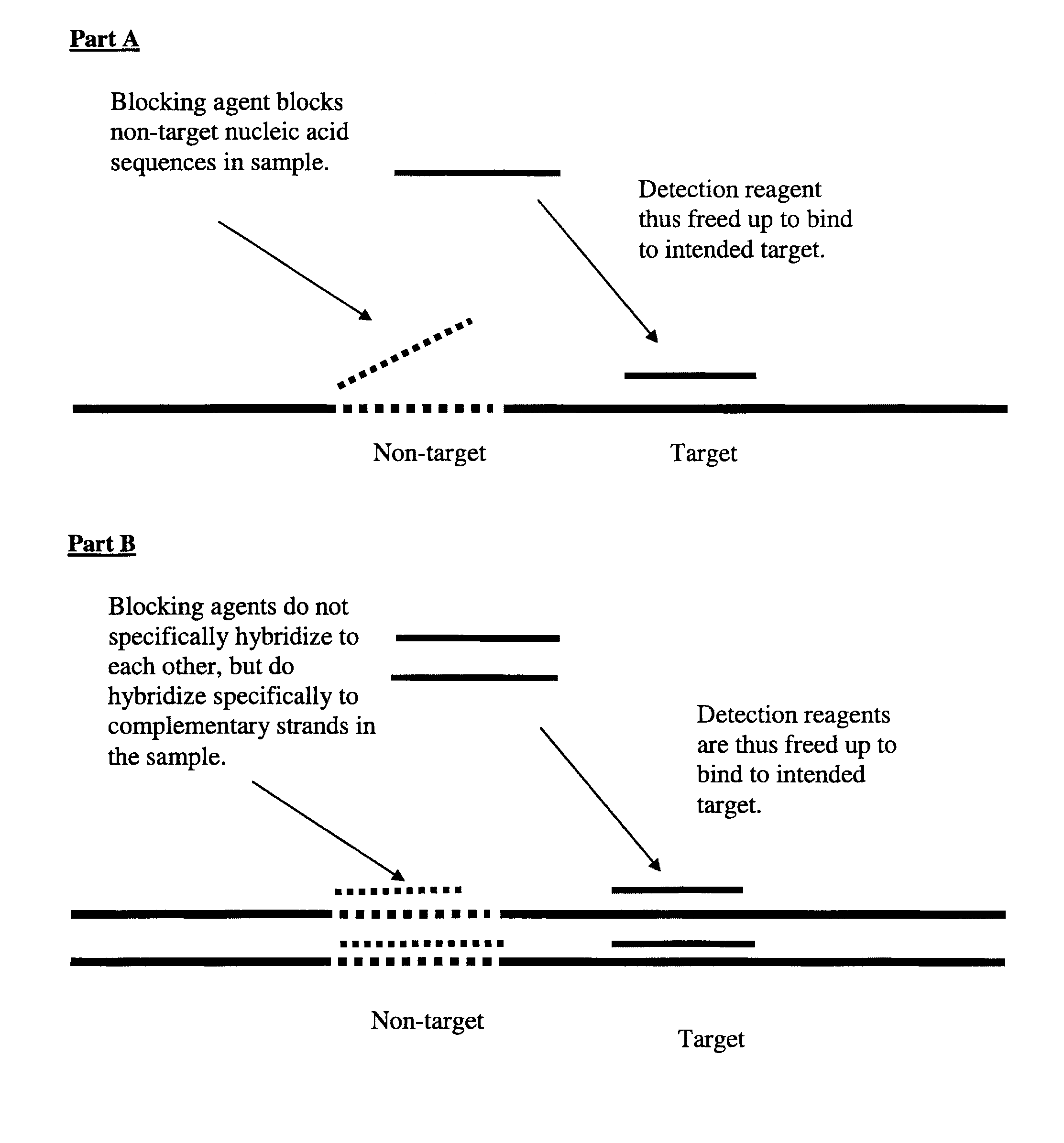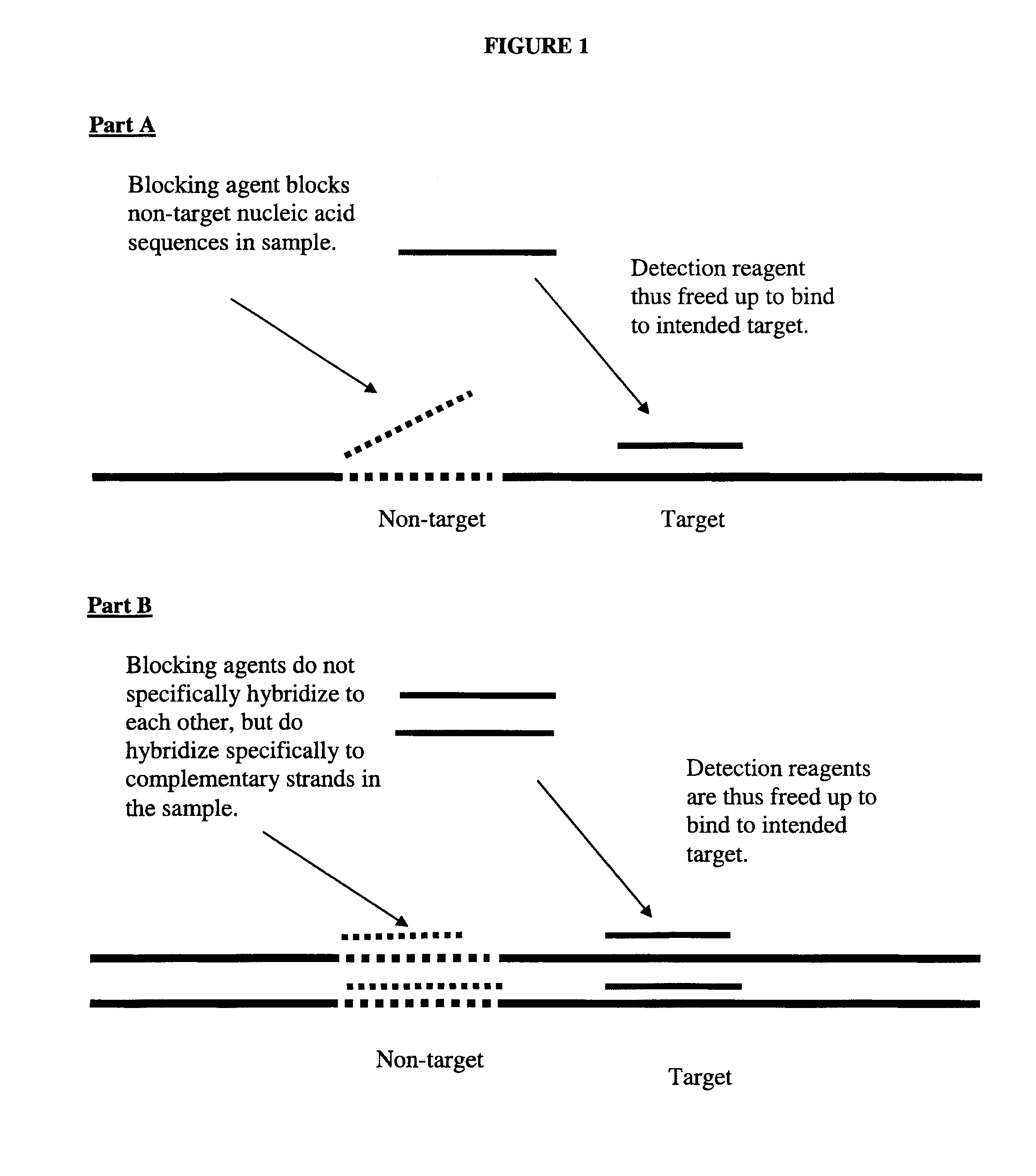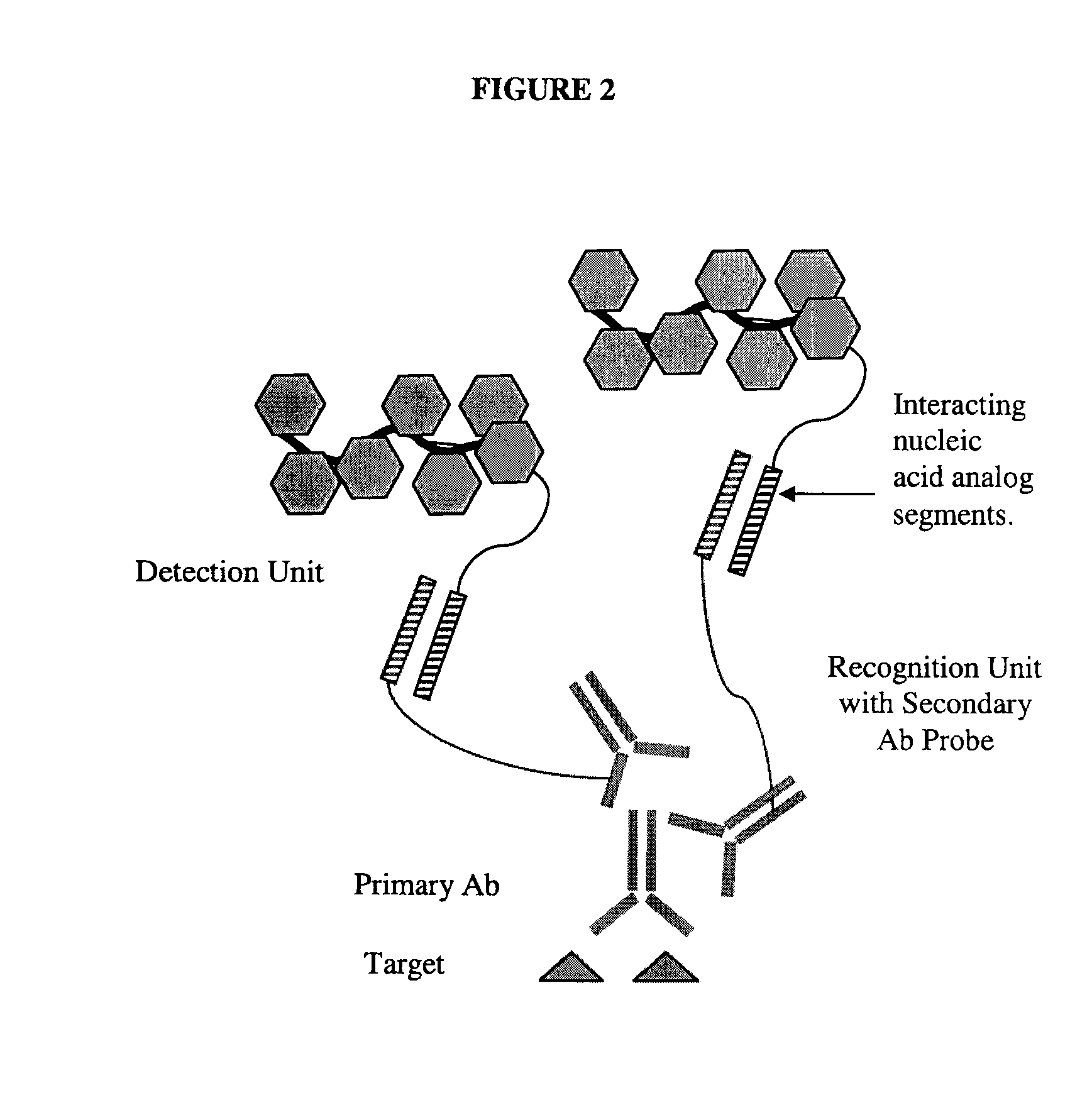Blocking Agents Comprising Non-Natural Nucleic Acids and Detection Methods Using such Blocking Agents
a technology of blocking agents and nucleic acids, applied in the field of nucleic acid blocking agents, can solve the problems of affecting certain detection systems, affecting the detection efficiency of certain detection systems, so as to improve the overall signal, reduce or eliminate unwanted interactions, and enhance the signal
- Summary
- Abstract
- Description
- Claims
- Application Information
AI Technical Summary
Benefits of technology
Problems solved by technology
Method used
Image
Examples
working examples
Example 1
Preparation of Pyrimidinone-Monomer
[0120]1. In dry equipment 4.6 g of solid Na in small pieces was added to 400 mL ethanol (99.9%), and was dissolved by stirring. Hydroxypyrimidine hydrochloride, 13.2 g, was added and the mixture refluxed for 10 minutes. Then 12.2 mL ethyl-bromoacetate (98%) was added and the mixture refluxed for 1½ hour. The reaction was followed using Thin Layer Chromatography (TLC). The ethanol was evaporated leaving a white compound, which was dissolved in a mixture of 80 mL of 1M NaCltrate (pH 4.5) and 40 mL of 2M NaOH. This solution was extracted four times with 100 mL Dichloromethane (DCM). The DCM phases were pooled and washed with 10 mL NaCltrate / NaOH-mixture. The washed DCM phases were evaporated under reduced pressure and resulted in 17.2 g of crude solid product. This crude solid product was recrystallized with ethylacetate giving a yellow powder. The yield for this step was 11.45 g (63%).
[0121]2. The yellow powder, 12.45 g. from above was hydro...
example 2
Preparation of the Thio-Guanine Monomer
[0124]1. 6-Chloroguanine (4.93 g) and 10.05 g K2CO3 was stirred with 40 mL DMF for 10 minutes at room temperature. The reaction mixture was placed in a water bath at room temperature and 3.55 mL ethyl bromoacetate was added. The mixture was stirred in a water bath until TLC (20% Methanol / DCM) showed that the reaction was finished. The precipitated carbonate was filtered off and washed twice with 10 mL DMF. The solution, which was a little cloudy, was added to 300 ml water, whereby it became clear. On an ice bath the target compound slowly precipitated. After filtration the crystals were washed with cold ethanol and dried in a desiccator. The yield for this step was 3.3 g (44.3%) of ethyl chloroguanine acetate.
[0125]2. Ethyl chloroguanine acetate (3.3 g) was dissolved by reflux in 50 mL absolute ethanol. Thiourea (1.08 g) was added. After a refluxing for a short time, precipitate slowly began forming. According to TLC (20% Methanol / DCM) the reac...
example 3
Preparation of Diaminopurine Acetic Acid Ethyl Ester
[0130]1. Diaminopurine (10 g) and 40 g of K2CO3 were added to 85 mL of DMF and stirred for 30 minutes. The mixture was cooled in a water bath to 15° C. Ethyl bromoacetate (3 mL) was added three times with 20 minute intervals between each addition. This mixture was then stirred for 20 minutes at 15° C. The mixture was left in the water bath for another 75 minutes, and the temperature increased to 18° C. The DMF was removed by filtering and the remaining K2CO3 was added to 100 mL of ethanol and refluxed for 5 minutes. Filtering and repeated reflux of the K2CO3 in 50 mL ethanol, filtering. The pooled ethanol phases were placed in a freezer, after which crystals formed. These crystals were filtered, washed with cold ethanol, filtered again and then dried in a desiccator overnight. The yield for this step was 12 g (76%).
PUM
| Property | Measurement | Unit |
|---|---|---|
| Electric dipole moment | aaaaa | aaaaa |
Abstract
Description
Claims
Application Information
 Login to View More
Login to View More - R&D
- Intellectual Property
- Life Sciences
- Materials
- Tech Scout
- Unparalleled Data Quality
- Higher Quality Content
- 60% Fewer Hallucinations
Browse by: Latest US Patents, China's latest patents, Technical Efficacy Thesaurus, Application Domain, Technology Topic, Popular Technical Reports.
© 2025 PatSnap. All rights reserved.Legal|Privacy policy|Modern Slavery Act Transparency Statement|Sitemap|About US| Contact US: help@patsnap.com



